Floodplain restoration benefits rare forest birds, nesting turtles and hunters
Gores Pool Wildlife Management Area is a 6,449-acre complex of floodplain forest, marshland and backwater along the Mississippi River and Vermillion River Bottoms in Hastings. This site is known for its outstanding biodiversity and Gores overall constitutes one of the largest expanses of floodplain native plant communities in southeast Minnesota.
In partnership with the Minnesota Department of Natural Resources, which owns the site, FMR has been working to restore and enhance roughly one-third of Gores WMA. Restoration efforts focus on the forest, savanna and prairie.
Gores WMA is also one of the top four sites in the state for rare forest birds, including cerulean warblers and red-shouldered hawks. The most recently acquired unit, formerly owned by Raymond Freitag, provides an important opportunity to work towards creating an unbroken cover of floodplain forest, which is one of FMR and the DNR's long-term goals for this stretch of the Mississippi Flyway.
The former Freitag property is located at the confluence of the Vermillion and Mississippi rivers. Primarily floodplain, the site also has a unique upland area, formed on a 20-foot high river terrace with limestone outcrops, that harbors maple-basswood forest and former oak savanna. In partnership with the DNR and with funding obtained from the National Fish and Wildlife Foundation, FMR restoration of the site remains in progress.
The photographs below provide a glimpse into some of the interesting features of the site.
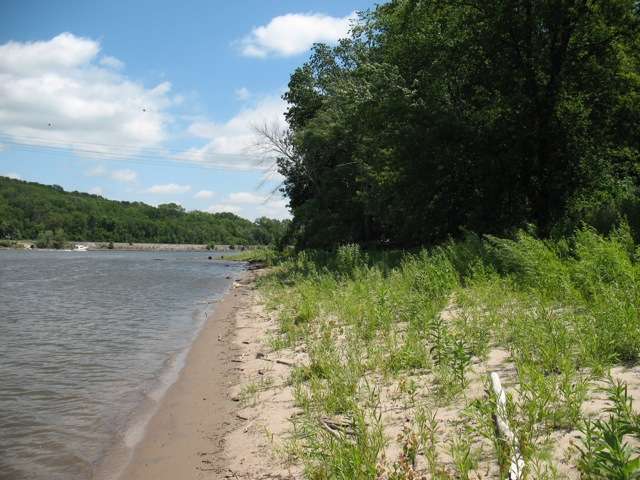
Mature floodplain forests protect about 6,000 feet of shoreline, while sandy beaches may provide habitat for nesting turtles.
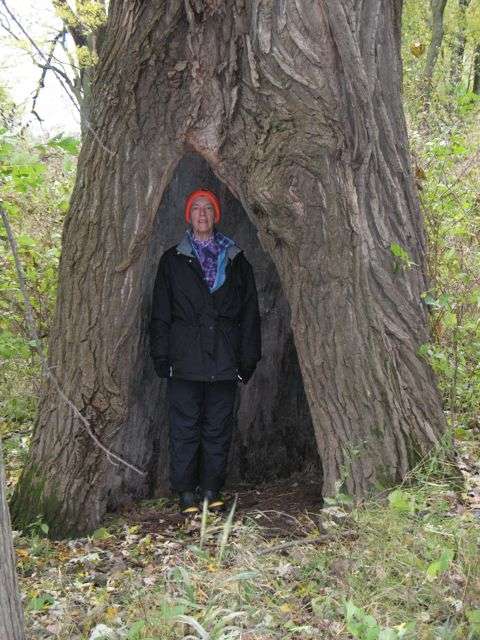
Large enough to house an ecologist, numerous huge cottonwood trees along the river were conspicuous even in 1937 aerial photographs. However, most of the site has since been cleared of such large specimens. Though still alive, this hollow tree is not destined to live much longer. Cottonwoods are an important floodplain tree, but are not regenerating well due in part to invasive grasses occupying the open ground the trees require for establishment. Restoration goals include increasing cottonwood stands.
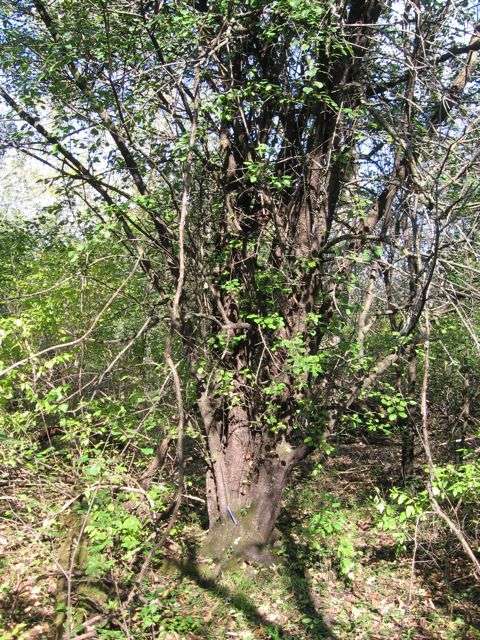
Common buckthorn and tartarian honeysuckle are the primary invasive wood plants at the site. This multi-stemmed buckthorn may be 30 or 40 years old. Areas that were most frequently flooded or that have a dense tree canopy had little or no buckthorn.
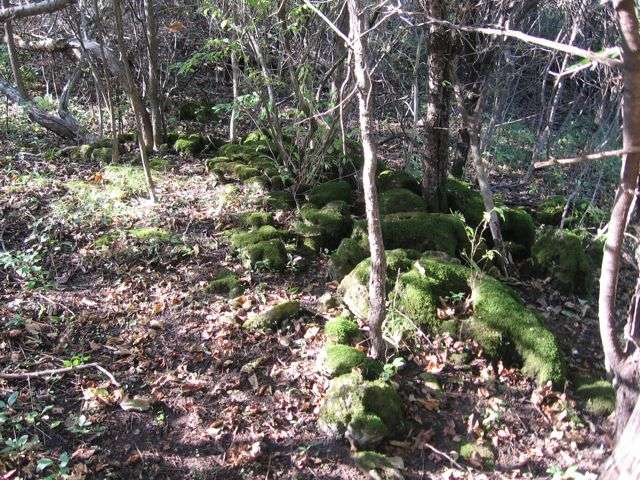
Limestone bedrock outcrops indicate the relatively shallow soils of the terrace, which coincides with a very high sensitivity to groundwater pollutants in that area.
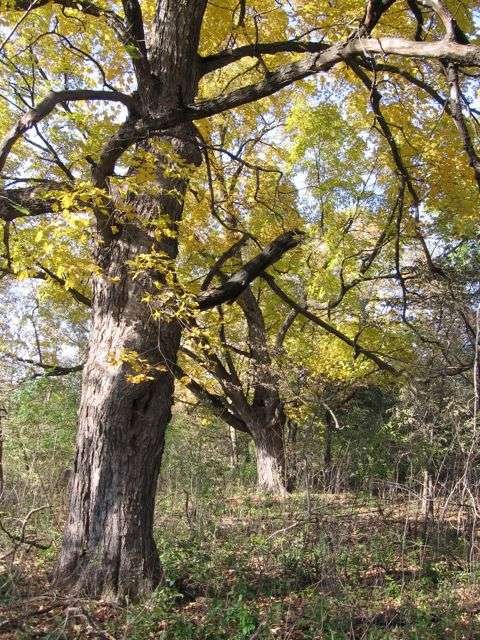
Old growth sugar maples, this one over 30 inches diameter, occupy the cooler north-facing slope of the terrace.
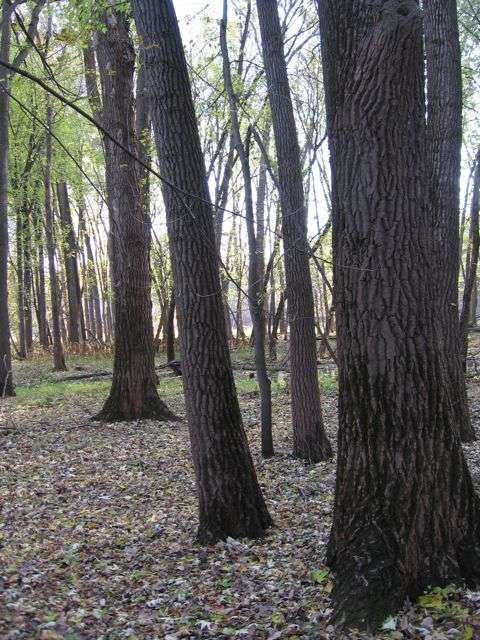
The highest quality floodplain forest at the site has characteristically sparse ground cover and shrub layer, and a diverse canopy of silver maple, green ash and cottonwood.
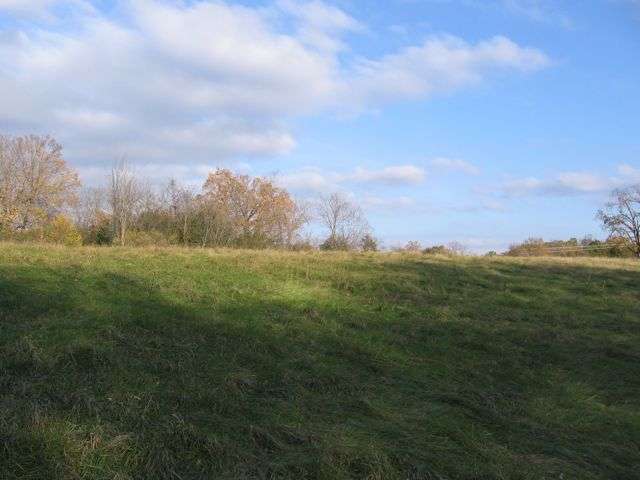
This old field on the terrace will be restored to prairie.
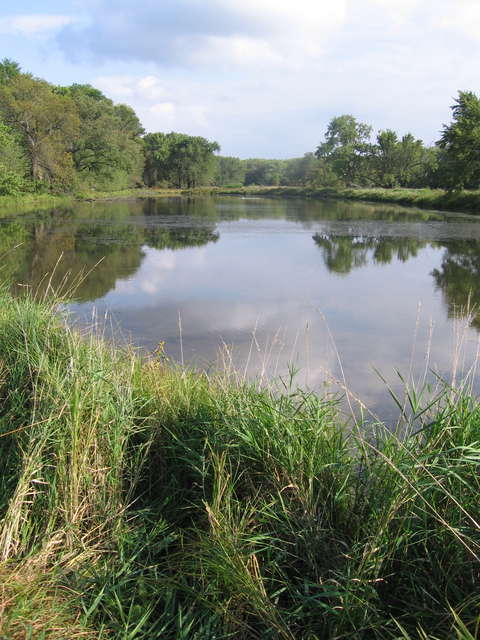
A pond within the site attracts abundant waterfowl. The diverse habitats of the WMA make it a popular hunting area for local residents.
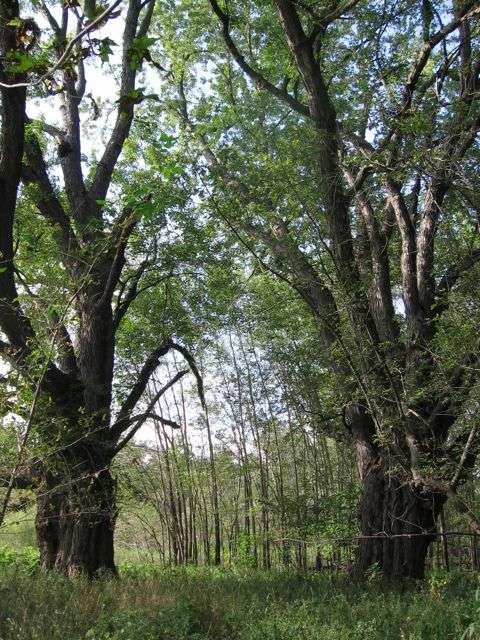
These mammoth silver maples, 72 and 96 inches diameter, are relics from the past. The floodplain forest surrounding them is dominated by green ash ranging from 10 to 24 inches diameter. Buckthorn seedlings carpet the ground, pointing to a future condition.
Karen Schik, Ecologist & Project Manager